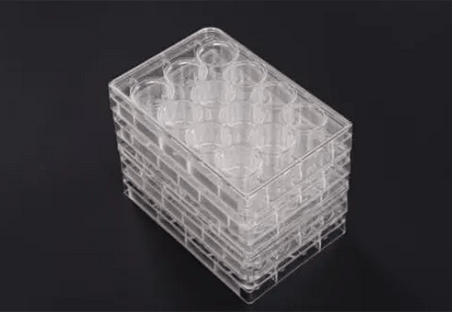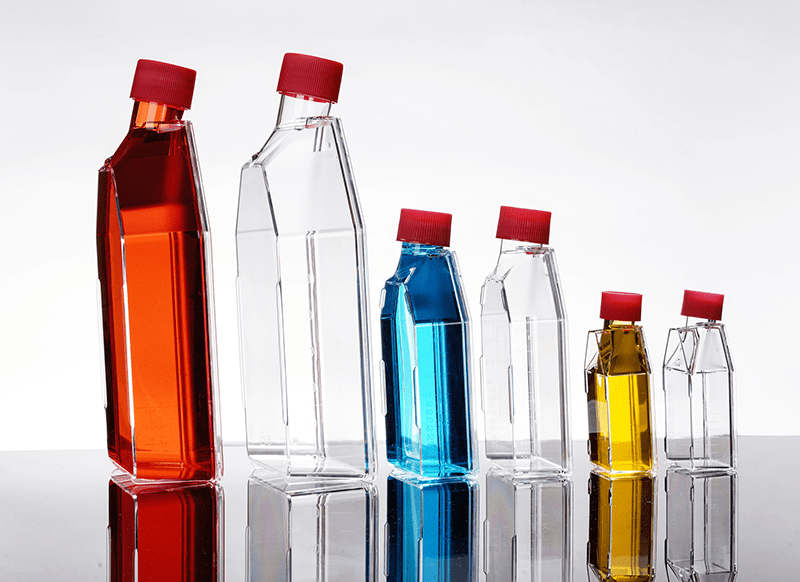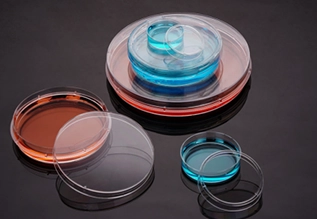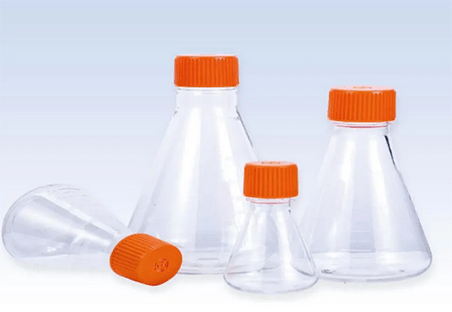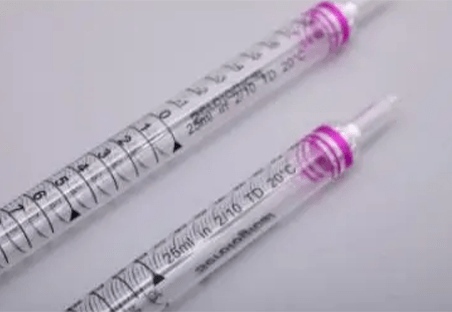Cell culture plays a pivotal role in modern biological research, facilitating the study of cellular behavior, disease mechanisms, and drug development. Among various cell culture techniques, suspension cell culture holds significance, particularly in fields such as immunology, virology, and biotechnology. Suspension cells, unlike their adherent counterparts, thrive freely floating in a culture medium. For researchers working with these cells, selecting the ideal flask is crucial for optimal growth, yield, and downstream applications. This article will guide you through choosing the perfect flask for your suspension cell culture and using it effectively.

Choosing the Perfect Flask: Detailed Guide
Selecting the right flask for suspension cell cultures is crucial for ensuring optimal growth conditions and experimental success. This section provides an in-depth look at the types of flasks designed for suspension cell cultures and the key factors to consider when choosing them.
Understand the Types of Flasks Designed for Suspension Cell Cultures
Cell culture flasks come in various designs, each suited to different types of cell cultures. For suspension cell cultures, the following types are commonly used:
| Type of Flask | Design | Usage | Advantages |
| Erlenmeyer Flasks | Conical shape with a narrow neck | Shaking or stirring applications | Excellent aeration and mixing, reduces risk of spills and contamination |
| Spinner Flasks | Equipped with internal stirrer/impeller | Large-scale suspension cultures | Efficient mixing and oxygenation, ideal for high-density cultures |
| Shake Flasks | Baffled design for enhanced mixing | Small to medium-scale suspension cultures | Cost-effective, easy to handle, consistent agitation |
| T-Flasks | Rectangular body with a canted neck | Small-scale suspension cultures | Large surface area for gas exchange, easy to handle |
This table provides a concise overview of the main types of flasks used for suspension cell cultures, helping to quickly compare their features and applications.
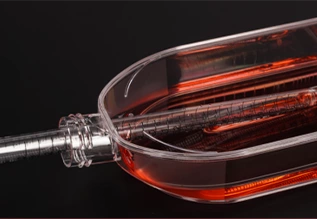
Consider the Following Factors When Choosing Flasks
Selecting the appropriate flask involves considering several factors that influence cell growth and culture maintenance. Here are the key factors to keep in mind:
- Cell Type:
- Compatibility: Different suspension cell types (e.g., lymphocytes, hybridomas) may have specific requirements for optimal growth. Ensure the flask type is compatible with the cell type being cultured.
- Growth Characteristics: Some cells might be more sensitive to shear stress, necessitating the use of flasks that provide gentle agitation.
- Flask Size and Volume:
- Surface Area-to-Volume Ratio: The ratio of surface area to volume impacts gas exchange and nutrient distribution. Select flasks that provide adequate aeration for the culture volume.
- Scalability: Consider the potential need for scaling up the culture. Choose flasks that allow easy transition to larger volumes without compromising cell health.
- Agitation and Mixing:
- Agitation Method: The choice between orbital shaking, magnetic stirring, or impeller mixing depends on the specific needs of the cell culture. Ensure the flask design supports the chosen agitation method.
- Mixing Efficiency: Uniform mixing is crucial for preventing cell clumping and ensuring even distribution of nutrients and oxygen. Select flasks that facilitate efficient mixing.
- Material and Sterility:
- Material Composition: Flasks are typically made from glass or plastic (polystyrene or polycarbonate). Ensure the material is non-toxic and does not leach harmful substances into the culture medium.
- Sterility: Pre-sterilized flasks reduce the risk of contamination. Choose flasks that are either pre-sterilized or can be easily sterilized before use.
- Cost and Availability:
- Budget Constraints: While high-quality flasks may be more expensive, they often provide better performance and reliability. Balance cost considerations with the need for quality.
- Supplier Reliability: Choose flasks from reputable suppliers to ensure consistent quality and availability.
- Special Features:
- Venting Caps: Flasks with venting caps allow for better gas exchange, which is particularly important for high-density cultures.
- Graduations and Markings: Flasks with clear graduations help in accurately measuring culture volumes.
By carefully considering these factors and understanding the specific needs of your suspension cell culture, you can select the most appropriate flasks to ensure optimal growth conditions and experimental success.
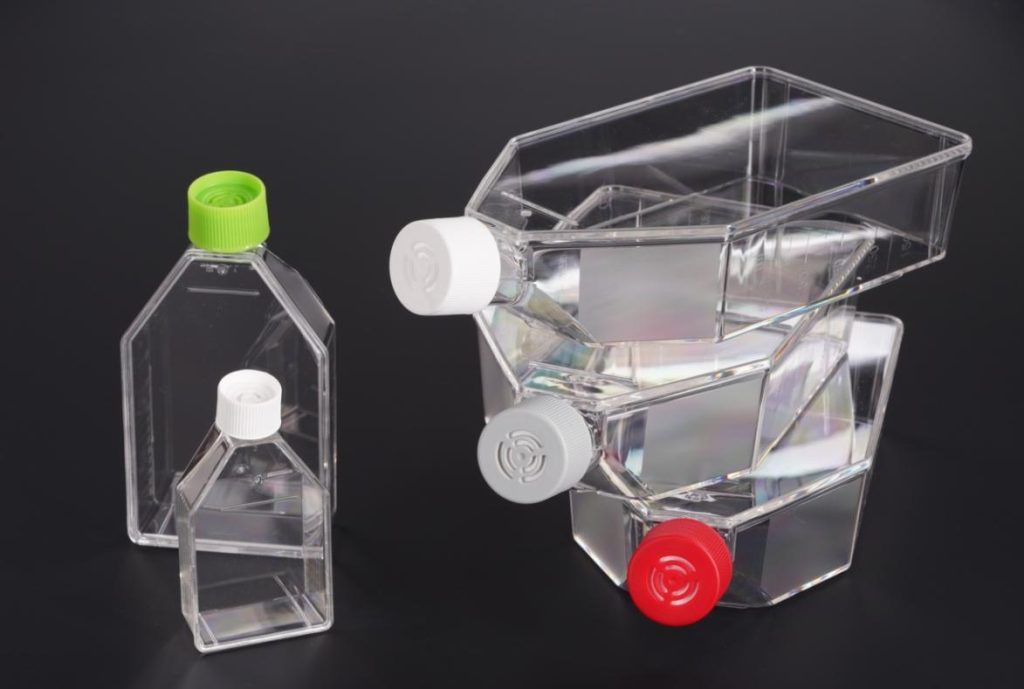
Using Cell Culture Flasks Effectively: Practical Tips
Using cell culture flasks effectively for suspension cells involves specific practices to ensure optimal cell growth, viability, and reproducibility of results. Here are some practical tips:
- Proper Inoculation Techniques
- Cell Density: Start with an appropriate cell density to ensure healthy growth. Overcrowding can lead to nutrient depletion and increased waste products, while too few cells can result in slow growth.
- Even Distribution: Ensure cells are evenly distributed in the medium when inoculating the flask. Gently swirl or rotate the flask after adding cells to achieve uniformity.
- Optimizing Agitation
- Shaking and Stirring: Use the appropriate shaking or stirring speed to keep cells in suspension. Orbital shakers are commonly used for shake flasks, while spinner flasks require magnetic stirrers or impellers.
- Avoiding Shear Stress: Adjust agitation to avoid excessive shear stress that can damage cells. This is particularly important for sensitive cell types.
- Maintaining Homogeneity
- Regular Mixing: Regularly mix the culture to prevent cells from settling at the bottom and to ensure even nutrient distribution.
- Gas Exchange: Use flasks with vented caps to facilitate gas exchange, which is crucial for maintaining proper oxygen levels.
- Monitoring Cell Growth and Viability
- Microscopic Examination: Regularly examine cells under a microscope to check for morphology and health.
- Cell Counting: Perform regular cell counts using a hemocytometer or automated cell counter to monitor growth rates and adjust culture conditions as needed.
- Viability Assays: Use viability assays (e.g., trypan blue exclusion, MTT assay) to assess the percentage of live cells in the culture.
- Aseptic Techniques
- Sterile Environment: Conduct all procedures in a laminar flow hood to maintain sterility.
- Sterile Equipment: Use pre-sterilized flasks and disposable pipettes, and sterilize any reusable equipment before use.
- Minimal Handling: Minimize the opening of flasks and handling of cultures to reduce the risk of contamination.
- Nutrient Management
- Regular Media Changes: Change the culture medium regularly to provide fresh nutrients and remove waste products.
- Feeding Schedule: Establish a feeding schedule based on the specific growth rate and nutrient consumption of your cell line.
- Temperature and pH Control
- Incubator Settings: Maintain the appropriate temperature (usually 37°C) and CO2 levels in the incubator to ensure optimal growth conditions.
- pH Monitoring: Monitor the pH of the culture medium and adjust if necessary to maintain the ideal pH range (typically around 7.2-7.4).
- Scaling Up Cultures
- Gradual Increase: When scaling up, increase the culture volume gradually to ensure cells adapt well to the larger environment.
- Consistent Conditions: Ensure that larger flasks or bioreactors provide similar agitation, aeration, and temperature conditions as the smaller flasks.
- Contamination Prevention
- Antibiotics: Use antibiotics selectively and avoid long-term reliance to prevent the development of resistant strains.
- Regular Checks: Regularly check for signs of contamination (e.g., turbidity, color change, unexpected pH shifts) and discard contaminated cultures immediately.
- Harvesting Cells
- Gentle Techniques: Use gentle centrifugation and careful pipetting to harvest cells to avoid damaging them.
- Appropriate Timing: Harvest cells at the optimal growth phase (usually the late exponential phase) to ensure maximum viability and functionality.
By following these practical tips, researchers can maintain healthy suspension cell cultures, minimize contamination risks, and achieve reliable and reproducible experimental results.
Conclusion
Selecting and using cell culture flasks for suspension cell cultures require careful consideration and attention to detail. By understanding the types of flasks available and considering factors such as cell type and culture volume, researchers can choose flasks tailored to their specific experimental needs. Implementing effective techniques, such as proper inoculation, optimizing agitation, and maintaining aseptic conditions, ensures successful suspension cell cultures in flasks. By following these guidelines and tips, researchers can maximize the efficiency and reliability of their suspension cell culture experiments, advancing scientific discoveries and breakthroughs in various fields of study. If you are looking for a cell culture flasks supplier, please feel free to contact Scopelab, they can provide you high quality products with reliable services.
